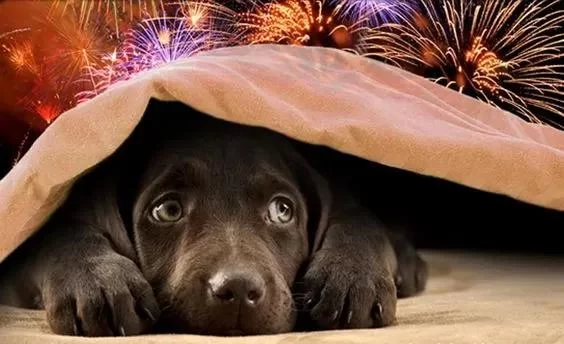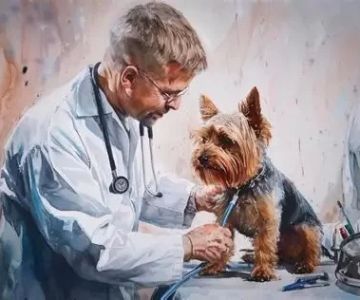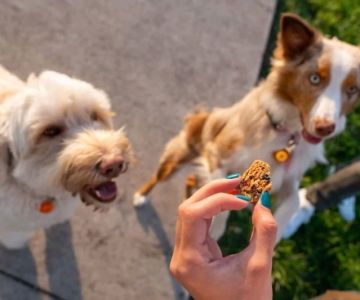- Understanding-Fireworks-Anxiety-in-Dogs
- Preparing-Your-Dog-Before-Fireworks-Start
- Training-Techniques-to-Calm-Your-Dog-During-Fireworks
- Environmental-Strategies-to-Reduce-Fireworks-Stress
- When-to-Seek-Professional-Help
- Real-Life-Case-Study
1. Understanding Fireworks Anxiety in Dogs
Many dog owners face a common challenge every year during celebrations: fireworks can cause extreme anxiety and stress in dogs. This is primarily due to the loud noises and flashing lights, which dogs perceive as threats. Understanding the root causes of this fear is the first step in learning how to train a dog to stay calm during fireworks.
Dogs have far more sensitive hearing than humans, so the booming sounds and crackling can be overwhelming. This triggers their natural fight-or-flight response, often leading to trembling, barking, hiding, or even attempts to escape. Recognizing these signs early can help owners intervene appropriately to calm their pets.
Why Some Dogs Are More Sensitive
Just like people, dogs have individual personalities and thresholds for stress. Some breeds or individual dogs are naturally more anxious or reactive to loud noises. Past traumatic experiences with fireworks or storms can worsen their response. Patience and a tailored approach are essential to helping these dogs feel safer.
2. Preparing Your Dog Before Fireworks Start
Preparation is crucial when teaching your dog to remain calm during fireworks. Start by desensitizing your dog to the sounds of fireworks well before the actual event. This involves controlled exposure paired with positive reinforcement, such as treats or play.
One effective method is to use recordings of fireworks sounds at a very low volume. Gradually increase the volume over days or weeks while ensuring your dog stays relaxed. This process can reduce the shock factor when real fireworks occur.
Building a Safe Space
Creating a comfortable and secure area for your dog can make a significant difference. Choose a quiet room or a cozy corner with familiar blankets and toys. This "safe haven" gives your dog a sense of control and safety during noisy disturbances.
3. Training Techniques to Calm Your Dog During Fireworks
When fireworks start, having trained behaviors can redirect your dog’s anxiety into calmness. Teaching your dog commands such as “stay,” “sit,” or “relax” helps them focus on you rather than the noise.
Reward-based training is key. Whenever your dog shows calm behavior during simulated or actual fireworks, reinforce this with treats and praise. Over time, they learn that staying calm brings positive outcomes.
Counter-Conditioning and Distraction
Counter-conditioning involves changing your dog's emotional response to fireworks by pairing the noise with something pleasant. For example, start playing with your dog or giving special treats as fireworks begin. This shifts their focus and builds a new association between fireworks and good experiences.
4. Environmental Strategies to Reduce Fireworks Stress
Besides training, altering your environment can help manage your dog’s fireworks anxiety. Closing windows and curtains can lessen the impact of loud sounds and flashing lights. Playing calming music or white noise can also mask the fireworks' noises.
Products like anxiety wraps, calming pheromone diffusers, or supplements may provide additional support. For personalized recommendations, Hidden Brook Veterinary offers expert advice on the most suitable calming aids tailored to your dog’s needs.
5. When to Seek Professional Help
If your dog’s anxiety remains severe despite your best efforts, consulting a veterinary behaviorist or professional dog trainer is advisable. Sometimes, medication or specialized behavioral therapy is necessary to effectively manage intense fear responses.
Professional guidance can provide customized training plans and treatment options, ensuring your dog’s comfort and safety during fireworks seasons and beyond.
6. Real-Life Case Study
Take the example of Bella, a 3-year-old Labrador Retriever who used to panic every Fourth of July. Her owners started training months ahead by using recordings of fireworks at low volume, gradually increasing it. They paired this with Bella’s favorite treats and established a cozy safe space in their living room.
On the big day, Bella still showed some nervousness but was able to stay mostly calm and relaxed thanks to the training. Her owners credit the combination of early desensitization, positive reinforcement, and environmental adjustments for transforming what was once a stressful ordeal into a manageable event.
Stories like Bella’s demonstrate how consistency, patience, and the right strategies make a real difference in teaching dogs to stay calm during fireworks.










